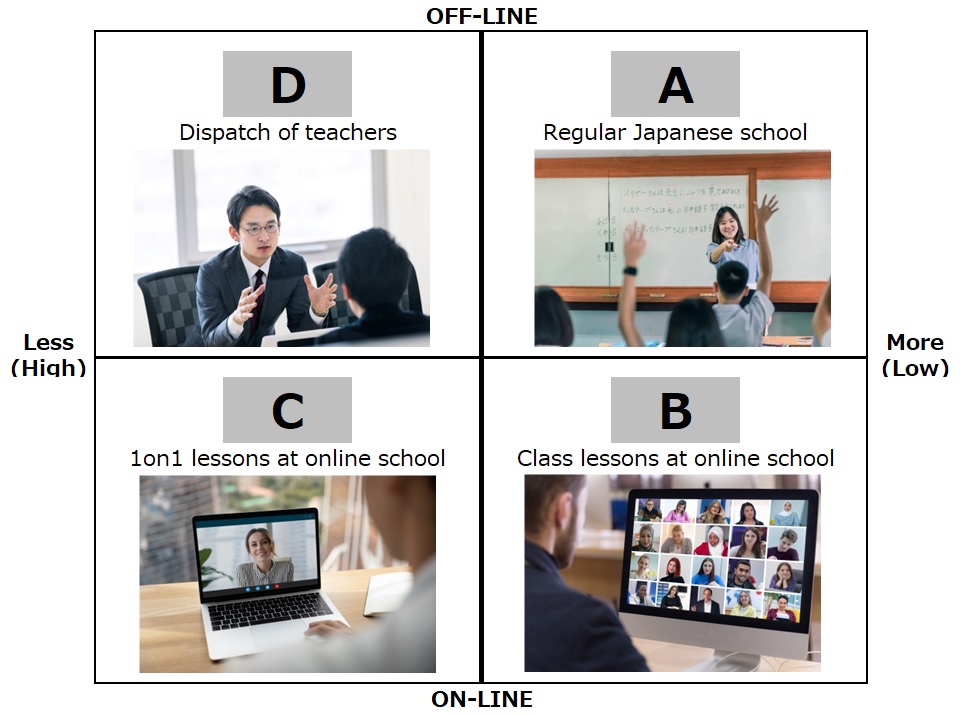What kind of Japanese schools are available?
March 25, 2022
Japanese language institutes are divided into four matrices, based on the two axes of lesson type (offline or online) and number of students.
*To be precise, there are group lessons both offline and online, but we omit them here to simplify the explanation.

If we use ABCD, clockwise from the top right, the main educational institutions that fall under each of these categories are as follows.
A: Regular Japanese school
B: Class lessons at online school
C: 1on1 lessons at online school
D: Dispatch of teachers
The general characteristics of each are as follows
A
Curriculum and schedule are fixed.
Many schools are for international students and class schedules are during the daytime on weekdays.
Some schools offer classes in the evening with small class sizes.
Many schools have changed to “B” because they cannot offer face-to-face lessons due to the COVID-19.
Tuition fees are the second lowest of the four, but long-term courses are usually offered.
B
There used to be very few, but the number has increased due to COVID-19.
Curriculum and schedule are fixed.
Learners from all over the world can take classes.
Some schools offer classes in the evening.
Tuition fees are the lowest of the four.
C
You can choose your own curriculum and schedule.
Learners from all over the world can take classes.
Some schools offer classes in the evening.
Tuition fees are higher than B, but lower than D.
Many teachers are familiar with lessons for business people.
D
You can choose your own curriculum and schedule.
Tuition fees are the highest of the four.
Many teachers are familiar with lessons for business people.
However, outside of large cities, there may be no Japanese teachers available.
Since the price per lesson is inversely proportional to the number of students, class lessons with a large number of students are inexpensive, and lessons with a small number of students, One-to-one is more expensive.
Based on the above characteristics, you should choose the one that best suits your needs.
Categories
Recent Posts
- I cannot keep up with meetings conducted in Japanese. Are there any good ways to study?
- Are there any good writing materials for business Japanese? (Three keys to developing business Japanese writing skills.)
- Are there any free materials available for studying business Japanese reading?
- Should I read newspapers for reading practice in business Japanese?
- Are there any good business magazines to practice reading business Japanese?
Archives
- August 2022
- June 2022
- May 2022
- April 2022
- March 2022
- February 2022
- January 2022
- October 2021
- January 2021
- August 2020
- July 2020
- June 2020
- May 2020
- April 2020
- March 2020
- February 2020
- January 2020
- December 2019
- November 2019
- October 2019
- September 2019
- August 2019
- July 2019
- June 2019
- May 2019
- April 2019
- March 2019
- February 2019
- January 2019
- December 2018
- November 2018
- October 2018
- September 2018
- August 2018
- July 2018
- June 2018
- May 2018
- April 2018
- March 2018
- February 2018
- January 2018
- November 2017
- October 2017
- July 2017
